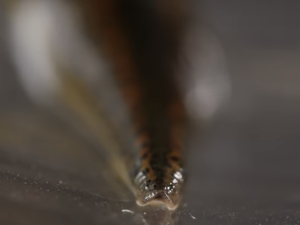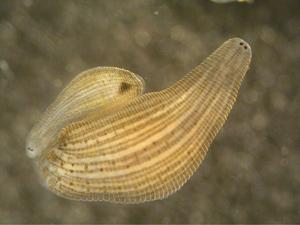

Research Bio
Molecular phylogenies indicate that most bilaterally symmetric animals fall into three major groups whose ancestors had already diverged by the time of the Cambrian explosion, ~600 million yeas ago: Edysozoa (arthropods, nematodes and other "cuticle-shedding" animals); Lophotrochozoa (annelids, mollusks flatworms, and related phyla whose embryos undergo spiral cleavage); and Deuterostomia (echinoderms, hemichordates and chordates). What was the last common ancestor of these three groups like? And how have developmental processes (e.g., gastrulation, axial growth, segmentation) evolved in isolation in the three major groups of animals? Glossiphoniid leech embryos are well suited for cellular and molecular analyses of embryonic development. They are also one of the best studied representatives of the phylum Annelida (segmented worms), in the relatively understudied super-phylum Lophotrochozoa.
Accordingly, the goals of the research in this lab are twofold: first, to obtain as satisfying as possible an understanding of leech development; and second, to understand how developmental processes are modified during the evolution of different animal taxa. For example, leeches undergo spiral cleavages homologous to those of mollusks, yet generate a segmented body plan, like arthropods. How have cell fates been modified among the different spirally cleaving animal groups to generate different types of embryos and adults? In particular, how is it that leeches make exactly 32 segments during development and cannot make more, either post-embryonically or in response to injury, while closely related annelids (oligochaetes) exhibit wonderful capacities for post-embryonic segmentation, regeneration, and even vegetative reproduction? And how finally, how is it that in annelids, chordates (and many arthropods) segment primordia arise sequentially from a posterior zone of cell migration and/or proliferation, whereas flies generate segments simultaneously within a syncytial blastoderm? Our work entails the use of various cellular, molecular and embryological techniques. Microinjection of cell lineage tracers and various imaging techniques are frequently used in combination with other procedures, e.g., RNASeq and in situ hybridization to characterize gene expression patterns, CRIPSR/Cas9 mutagenesis to perturb gene function, and transposon-mediated introduction of ectopic genes.
Areas of recent interest include:
(1) mechanisms underlying the dramatic acceleration of genome rearrangements in leeches and oligochaetes compared to most other animals; (2) CRISPR-enabled functional analysis of genes in the highly fragmented HOX cluster of the leech; (3) the molecular basis of phenotypic differences and their physiological consequences in identified neurons of the leech ganglia; (4) the molecular control of stem cell divisions in the posterior growth zone in leech; (5) dynamics of cell-cell-signaling by Notch and Wnt pathways in the 2-cell embryo; (6) the mechanisms of epiboly (cell movements during gastrulation); (7) developmental comparisons of leeches and oligochaetes.
Given its compact genome and the extensive knowledge of its development that is already available, Helobdella robusta was a natural for inclusion as one of the first lophotrochozoan species for genome sequencing at the Joint Genome Institute in Walnut Creek. More recently, we have obtained high quality genome assemblies for the sibling species H. austinensis and for Hirudo verbana, one of the more distantly related medicinal leech species.
Research Expertise and Interest
leech embryo, evolution & development, cell fate determination, lineage tracing, specification of neuronal phenotypes, genome evolution
In the News
A ‘Deep Look’ into leeches’ comeback
What do leeches, limpets and worms have in common?
Leeches, despite the yuck factor, have captured the hearts of two University of California, Berkeley, scientists who are part of a team that this week is publishing the leech’s complete genome sequence.


